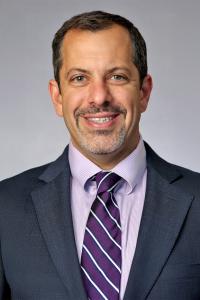Dr. Michael Vitale Discusses the Importance of Advances in Low-Dose X-Ray for Pediatric Spine Patients
Treating smaller patients means everything has to be smaller - implants, instruments and apparel. The same idea has to be applied to radiation. “While digital x-rays have evolved to decrease radiation exposure, less is obviously better,” said Dr. Michael G. Vitale, Ana Lucia Professor of Pediatric Orthopaedic Surgery at Columbia University Medical Center. “If it was my child, I would not settle for anything less and that same philosophy drives all my care for my patients.”
For that reason, when EOS Imaging launched its Micro Dose feature for pediatric imaging, Vitale was an early adopter and vocal proponent of the new technology. “EOS offers faster imaging, less radiation and a more complete radiographic picture and is a win-win-win in this regard,” Vitale said.
We asked Dr, Vitale to discuss some of the benefits of this new technology:
Why is this new imaging system such an important advance for pediatric spine patients?
Vitale: Upon hearing of the revolutionary capabilities of EOS, I immediately knew this is a “must have” technology for our patients visiting our Pediatric Spine Program at NewYork-Presbyterian/Morgan Stanley Children’s Hospital. We have a very busy Center, and see about 50 children with scoliosis every single day of the week. This can create a backlog in getting appropriate x-rays as most patients need full length front and sideways x-rays (as well as hand x-rays to monitor skeletal development) which used to take about 45 minutes per patient. And while the x-rays were critical to guide decision making regarding both conservative and surgical management of scoliosis, we all had some concerns about radiation exposure. I was particularly concerned about radiation exposure in our youngest patients; Given our interest and experience in Early Onset Scoliosis, almost half of my patients are less than 8 years old.
How have these new imaging capabilities impacted your practice?
Vitale: Implementation of EOS has dramatically changed our practice. The ability to simultaneously obtain AP and lateral x-rays with a single high speed scan led to an immediate and dramatic improvement in wait times for our patients. Instead of x-rays wait times up to one hour, patients have a full set of x-rays in only six minutes. It has been a disruptive change for the better. On the research side, we are now embarking on a whole series of studies in our Research Group looking at “global balance” (from head to toe). There is so much we can learn from EOS imaging. With my partners at Columbia University Medical Center, we are now embarking on a platform of clinical research studies aimed at better understanding spinal balance and ways to optimize operative treatment.

